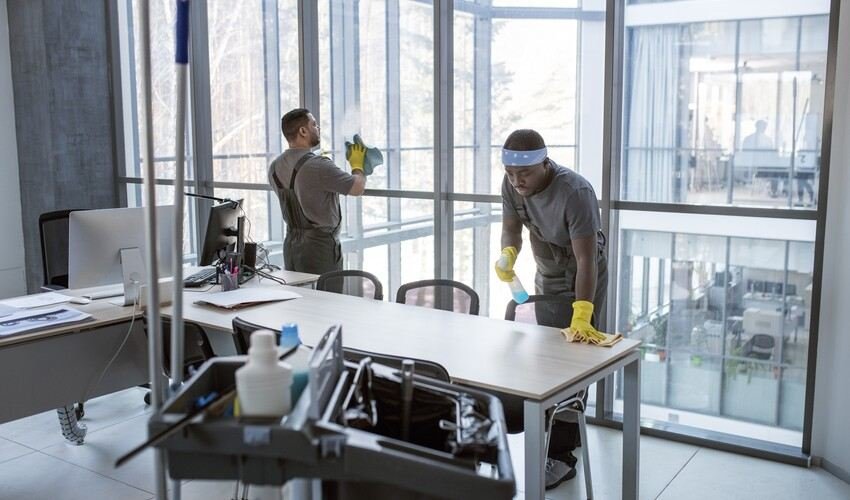Office furniture plays a vital role in shaping the professional environment of any workplace. From desks and chairs to cabinets and conference tables, these pieces not only serve functional purposes but also contribute to the aesthetic and comfort of the office. However, without proper maintenance and cleaning, even the most high-quality furniture can deteriorate over time. Ensuring the longevity of office furniture requires a proactive approach that combines routine care, appropriate cleaning techniques, and an understanding of the materials involved.
Understanding the Importance of Furniture Maintenance
Maintaining office furniture in West Palm Beach is not merely about preserving its appearance. It directly impacts employee productivity, workplace hygiene, and the overall impression a business makes on clients and visitors. Worn-out chairs, stained upholstery, and scratched surfaces can create a negative atmosphere and even lead to discomfort or injury. Regular upkeep helps prevent these issues, ensuring that furniture remains safe, functional, and visually appealing.
Moreover, investing in maintenance can be more cost-effective than frequent replacements. By extending the life of furniture, businesses can allocate resources more efficiently and reduce waste. This approach also aligns with sustainable practices, minimizing the environmental impact associated with manufacturing and disposing of office furnishings.
Establishing a Routine Cleaning Schedule
One of the most effective ways to maintain office furniture is by implementing a consistent cleaning schedule. Daily tasks might include wiping down desks, sanitizing shared surfaces, and ensuring that chairs are free of dust and debris. Weekly or monthly routines can involve deeper cleaning, such as vacuuming upholstered furniture, polishing wood surfaces, and inspecting for signs of wear or damage.
Consistency is key. Assigning responsibilities to cleaning staff or employees ensures that maintenance does not fall through the cracks. Keeping a checklist or calendar can help track tasks and ensure that no area is overlooked. Over time, this routine becomes second nature, contributing to a cleaner and more organized workspace.
Choosing the Right Cleaning Products
Not all cleaning products are suitable for every type of office furniture. Using the wrong chemicals can damage surfaces, discolor fabrics, or leave behind residues that attract more dirt. It is essential to understand the materials used in each piece of furniture and select cleaning agents accordingly.
For wooden furniture, gentle cleaners that preserve the finish are ideal. Harsh chemicals can strip away protective coatings and lead to cracking or fading. Microfiber cloths and specialized wood polishes can help maintain the natural luster of desks and tables.
Metal furniture, often found in filing cabinets and frames, requires non-corrosive cleaners that remove grime without causing rust. Stainless steel surfaces benefit from products designed to eliminate fingerprints and smudges while preserving shine.
Upholstered furniture demands particular attention. Fabric chairs and sofas should be vacuumed regularly to remove dust and allergens. Spot cleaning with fabric-safe solutions can address spills and stains. For leather upholstery, conditioners and cleaners formulated for leather help maintain suppleness and prevent cracking.
Preventing Damage Through Proper Use
Maintenance also involves educating employees about proper furniture use. Misuse or neglect can accelerate wear and tear, leading to costly repairs or replacements. Encouraging staff to avoid placing heavy items on delicate surfaces, using coasters for beverages, and refraining from leaning back excessively in chairs can make a significant difference.
Furniture placement matters as well. Keeping pieces away from direct sunlight can prevent fading and warping, especially for wood and leather items. Ensuring that chairs and desks are positioned on level surfaces reduces strain on joints and legs, preserving structural integrity.
In high-traffic areas, consider using protective accessories such as chair mats, desk pads, and corner guards. These additions can shield furniture from scratches, spills, and impact, prolonging its lifespan without compromising functionality.
Addressing Repairs Promptly
Even with diligent care, office furniture may occasionally require repairs. Loose screws, wobbly legs, or torn upholstery should be addressed promptly to prevent further damage. Ignoring minor issues can lead to more significant problems that affect safety and usability.
Having a designated maintenance team or service provider can streamline the repair process. Regular inspections help identify potential concerns before they escalate. In some cases, manufacturers offer warranties or repair services, making it worthwhile to keep documentation and contact information readily available.
Incorporating Professional Cleaning Services
While routine cleaning can be managed in-house, professional services offer deep cleaning and specialized care that may be beyond the scope of daily maintenance. Periodic professional cleaning can rejuvenate furniture, remove embedded dirt, and restore original finishes. These services are particularly beneficial for carpets, upholstered furniture, and large conference tables that require detailed attention.
Choosing reputable providers with experience in office environments ensures that furniture is treated appropriately. Scheduling these services during off-hours minimizes disruption to daily operations and allows for thorough cleaning without interference.
Embracing a Culture of Care
Ultimately, maintaining and cleaning office furniture is not just a task—it is a reflection of workplace culture. When employees take pride in their environment, they are more likely to treat furniture with respect and contribute to its upkeep. Management can foster this culture by providing the necessary tools, setting expectations, and recognizing efforts to maintain a clean and organized space.
In conclusion, the longevity and quality of office furniture depend on consistent care, informed cleaning practices, and a proactive approach to maintenance. By investing time and attention into preserving these essential assets, businesses can create a professional, comfortable, and efficient workspace that stands the test of time. Discover innovative workspace solutions tailored to your business needs at corporateofficeint.com—where design meets functionality.
Read Dive is a leading technology blog focusing on different domains like Blockchain, AI, Chatbot, Fintech, Health Tech, Software Development and Testing. For guest blogging, please feel free to contact at readdive@gmail.com.





